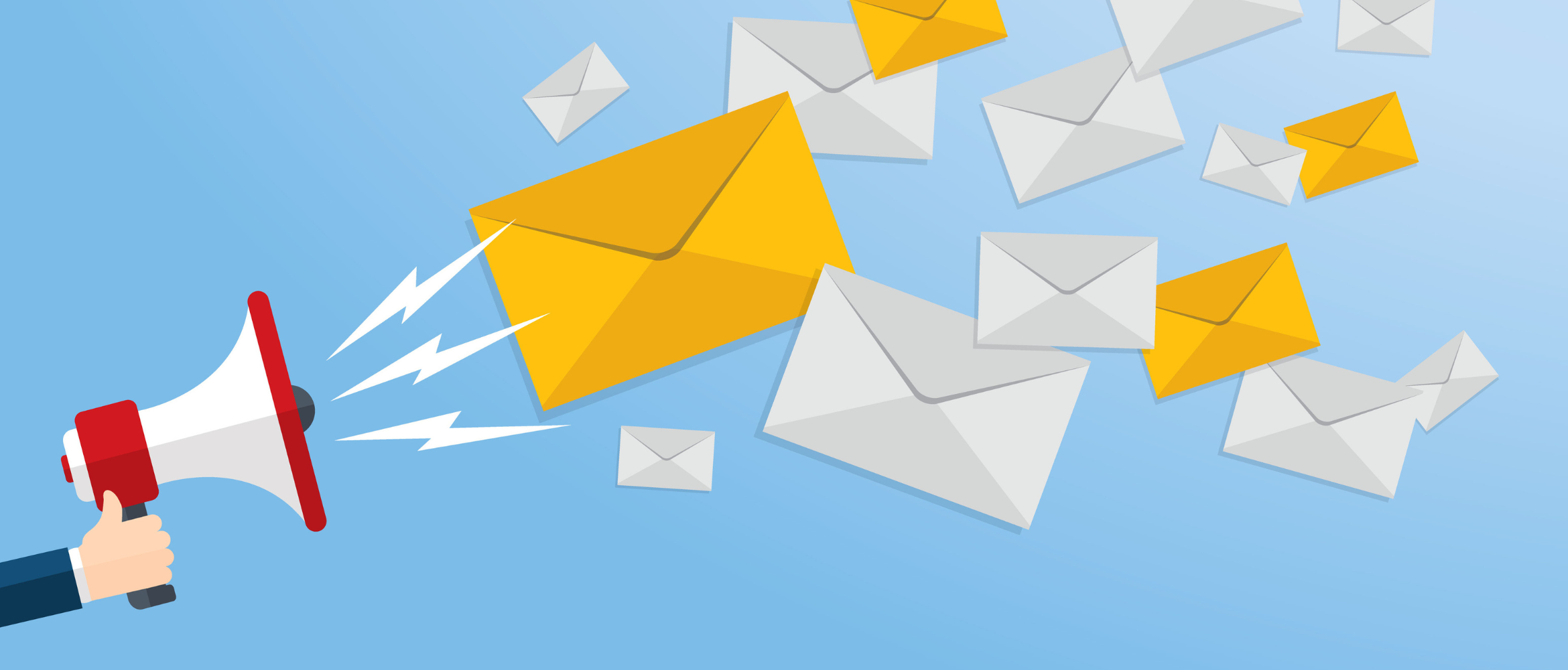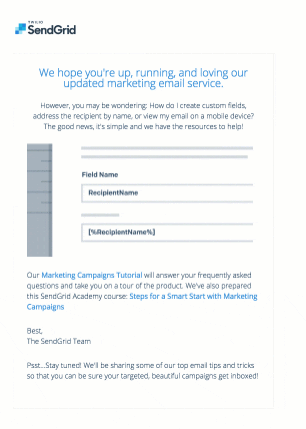Send With Confidence
Partner with the email service trusted by developers and marketers for time-savings, scalability, and delivery expertise.


Time to read: 9 minutes
Want to learn how to send a mass email to your audience? You've come to the right place.
You know how to communicate with customers in the information age: SMS, social media, and, above all, email. Email communications inform customers about promotions and get them interested in new offerings from your brand.
It’s relatively easy to deploy, affordable, measurable, and effective at fostering long-term engagement.
Mass emails (or bulk emails) are the primary method of email marketing—aside from order confirmations and other individually tailored communication triggered by specific customer activities. For instance, you might send customers a mass email for upcoming event awareness or to alert them to seasonal sales.
Want to send a mass email and don’t know where to start? We’ve put together a brief guide explaining how to send mass email in 6 steps. Following this guide will ensure your messages land in your desired recipients’ inboxes without fail.
A mass email refers to a single email message that is sent to a large group of recipients simultaneously. It's sometimes called an email blast.
These emails are typically used for communication, marketing, or informational purposes. You often send them to a wide audience, such as your customer base, subscribers, or a list of contacts.
However, just because it's a "mass" email doesn't mean that it's not segmented. You should still use some degree of segmentation and personalization to reach your intended audience and boost engagement.
Mass emails can be used to share announcements, promotions, newsletters, updates, event invitations, or any other type of content that is relevant to the recipients.
Mass emails are commonly managed through email marketing platforms (like Twilio SendGrid) to allow your businesses to personalize the content, track open rates, measure click-through rates, and manage unsubscribes.
The million-dollar question—should you actually send mass emails to your audience? Well, the answer isn't a simple yes or no. It depends.
First, consider your goals. Are you looking to blast a quick promotion, announce a mega event, or share something super exciting that just can’t wait? If your message has broad appeal and needs to reach the masses fast, then yes, a mass email might be the right idea.
Next, think about your audience. Are they the type that appreciates a check-in, no matter the content? Or do they prefer only the most relevant updates and offers? Know your subscribers. You don’t want to be that friend who texts about every single thought that crosses their mind, right?
Personalize your emails. Just because you’re sending a mass email doesn’t mean it has to feel like it came off a conveyor belt. A little personalization goes a long way. Address recipients by name, reference their last purchase, or mention something they’re interested in. Make them feel like you’re writing to them, not at them.
Remember, quality over quantity. Every email you send can either build or bruise your relationship with your audience. Make sure your mass email adds value. It should be something worth opening, not just another piece of digital clutter.
Lastly, check your tech. Do you have the right tools to send out a massive email blast without landing in the dreaded spam folder? Make sure your email service provider is up to the task, and your email list is clean and updated.
If you’ve ticked all the boxes above and feel confident it will bring joy (or at least value) to your recipients' inboxes, then go ahead and send that mass email. Just remember, with great emailing power comes great responsibility.
Use it wisely to keep your audience engaged, informed, and eager for more.
Before you can send your first email, you’ll need to find an email service provider (ESP) that can meet your deliverability expectations and handle the volume of email you want to send. An effective bulk email delivery service has the power to deliver emails at scale without substantial delays.
As an industry leader, Twilio SendGrid sends over 10 million messages a month. So whether you need to send 100 emails a month or 10 million, we can help you optimize your email delivery rates and scale your email program—check out our custom pricing based on your email sending volume or business needs.
While you can get by using a shared IP address if you only send a few thousand emails a month, you’ll need to up your game if you plan to send hundreds of thousands of emails (or more) a month. Sharing an IP address can hurt your reputation if another sender using the same IP doesn’t send responsibly. That’s why owning and controlling a dedicated IP address(es) is a must to protect your reputation as you scale.
Next, you need to know who you want to receive your message. An ESP like SendGrid can help you build your email list and grow your business with simple sign-up forms placed directly on your website.
Just remember that no matter how easy and tempting it might seem, never buy an email list. Purchased email lists won’t help you achieve your marketing goals because the users aren’t expecting to hear from you—and may not want your emails.
Not only will purchased email lists experience poor recipient engagement, but these also damage your sender reputation, impact your sender score negatively, and can get your email account shut down potentially. Again, never buy an email list.
To grow your email lists the right way, create multiple ways for individuals to sign up for your emails, optimize your opt-in pages, and provide an email preference center for subscribers to determine the types of messages they want to receive from your brand and how often they receive them.
Now it’s time to determine what you want your email to say. At SendGrid, we like to put ourselves in our customer’s shoes, so before you draft your email copy, consider what value your email has for recipients—or why they should want to receive your messages.
If you were a customer, would this email be valuable to you? Thinking about your email from your customer’s perspective can help you tailor your tone, copy, and content to your recipients' interests better, which can help increase your engagement.
Here’s what you’ll need to include in your email copy draft:
Of course, you can always choose to use a plaintext email as well.

However you decide to format your message, ensure that every email you send has one clear call to action (CTA). Multiple CTAs confuse your readers, so your CTA needs to detail the next step you want your recipients to take, like downloading an e-book, browsing your newest products, or shopping for your latest sale.
For instance, let’s say you’re drafting a mass email for upcoming event awareness. Include all the vital details—what the event is and when and where it’ll happen. Also, include a form for customers to RSVP. It’s common sense and effective.
Unfortunately, you can’t just dive right in and start sending a million emails a day. So before you can start sending bulk emails, you need to warm up your IP address and sender domain to prove to internet service providers (ISPs) that you’re a reputable sender.
How do you kick off the process of warming up an IP for large volumes of email traffic? Start by sending a small number of emails and increasing gradually in volume. You’ll also want to monitor your lists as you go, removing any unengaged or invalid contacts to increase the likelihood of your recipients opening and clicking your messages.
If you have strong engagement and few spam complaints, you can continue to slowly increase the number of emails you send over time until you reach your desired volume. The key is patience and consistency. Focus on producing good emails and sending them to an audience that will find them relevant.
And there you have it! Now you know how to send bulk email blasts successfully. But before you press Send, keep these additional points in mind to avoid making the most common mistakes—you don’t want to depress engagement and fall into the same traps.
The most important thing to remember is not to send too many emails because the more emails you send, the fewer returns you’ll see. Customers might even relegate your emails to the spam folder, which is the last thing you want.
Once you’ve sent out your bulk email, stay on top of your sales funnel and ensure customers follow through on the offers.
However, your sales funnel doesn’t have to be a complicated web. It can be pretty straightforward: Where are your various customers engaging with your brand, and what steps do you need to take to bring them further along?
Also, consider which methods might be most effective for keeping in touch with consumers after an event concludes. Email is certainly one way to continue the conversation with customers, but in some cases, it may make sense to target individuals across channels, including social and text marketing in your strategy.
Remember, even though you’re sending many emails, taking the time to track individual preferences and email engagement levels can help you get the most out of your mass email campaigns long term.
Mass email campaigns, like any marketing strategy, come with their own set of advantages and disadvantages. They should be a powerful part of your email marketing program, but they have a special time and place.
Here are some pros and cons to consider:
Pros of mass email campaigns:
Cons of mass email campaigns:
Mass emails tend to be a staple in most marketers repertoire, but it's not the only tool in your shed. Here are some altneratives to mass emails that might resonate (and perform better) with your audience:
Segmented email campaigns: Tailor your message for different audience segments based on their interests, behaviors, or demographic information.
Email automation: Set up email sequences that trigger based on specific actions your customers take. Whether it’s a welcome series for new subscribers or follow-up emails post-purchase, automation makes it easy to deliver the right message at the right time without lifting a finger.
Targeted newsletters: Instead of sending a one-size-fits-all newsletter, create variations tailored to different customer groups. This can include customized content recommendations, special offers, or updates that align with their past interactions with your brand.
Behavioral emails: Send emails that respond to the specific actions your customers take on your website or app. For example, if a customer abandons a shopping cart, you can send a targeted email to remind them or offer help to complete their purchase.
Re-engagement campaigns: Rekindle the interest of customers who haven’t interacted with your brand in a while. These campaigns can clean your list and reactivate subscribers by reminding them what they’re missing.
Dynamic content: Use dynamic content in your emails that changes based on the recipient’s data. This could be as simple as changing the images and text to match the user’s previous browsing behavior or purchase history.
Knowing how to send mass email is a powerful tool in the sales funnel. And utilizing mass email effectively will help you guide customers on the first steps toward greater engagement with your products and brand.
For more tips on how to send a mass email effectively for your email marketing strategy, check out our bulk email guide or contact our team of experts to get started.
Partner with the email service trusted by developers and marketers for time-savings, scalability, and delivery expertise.